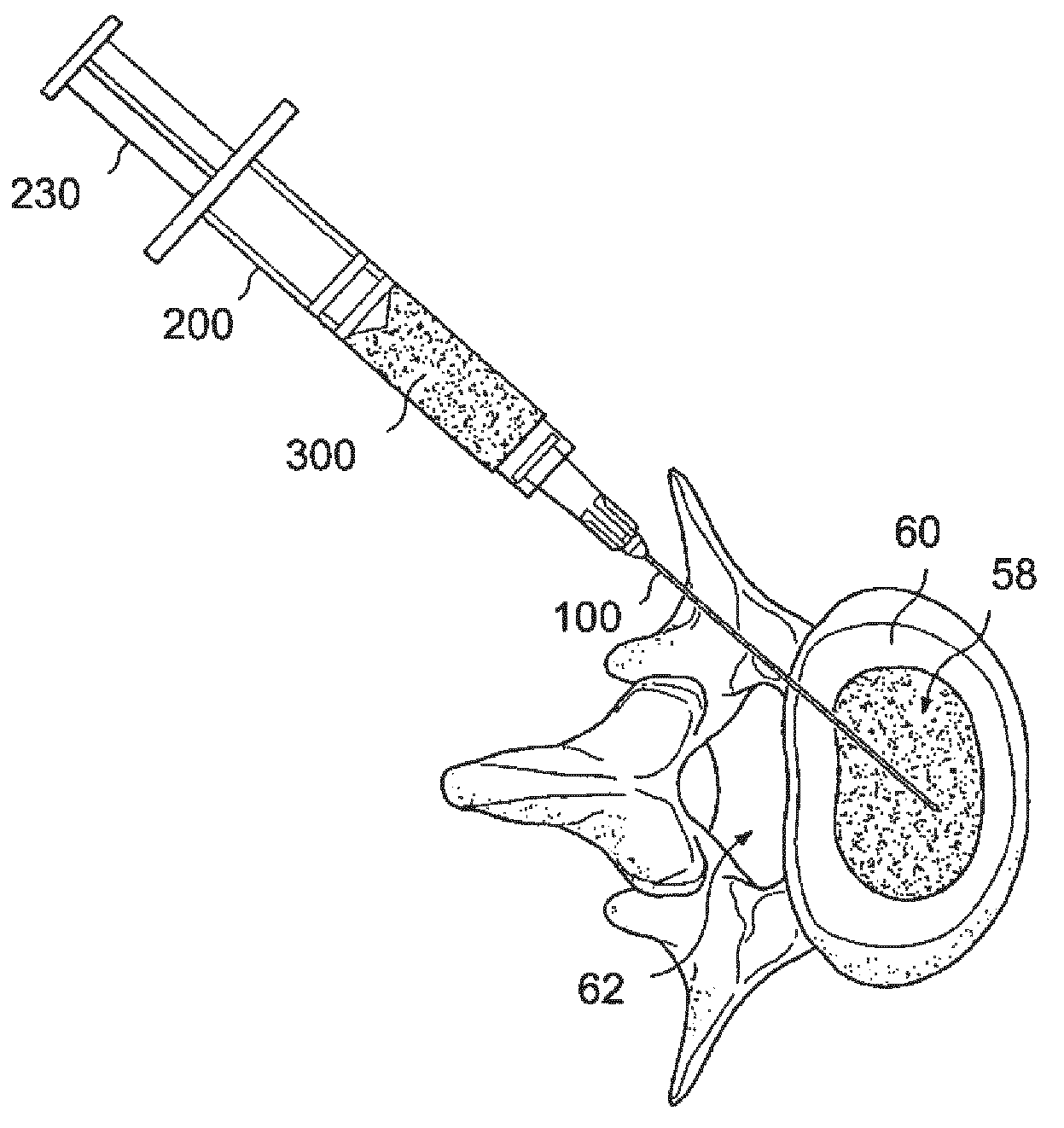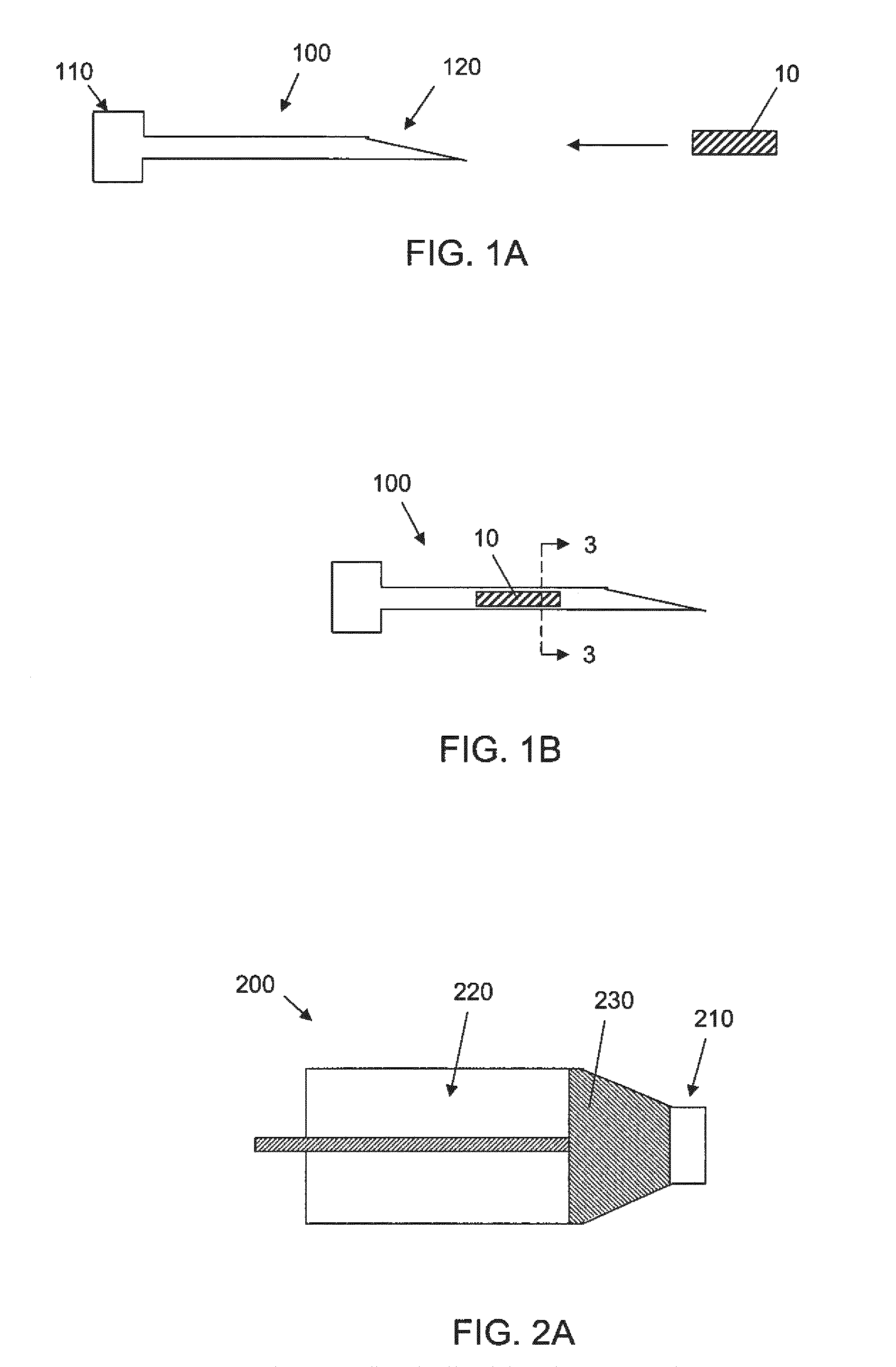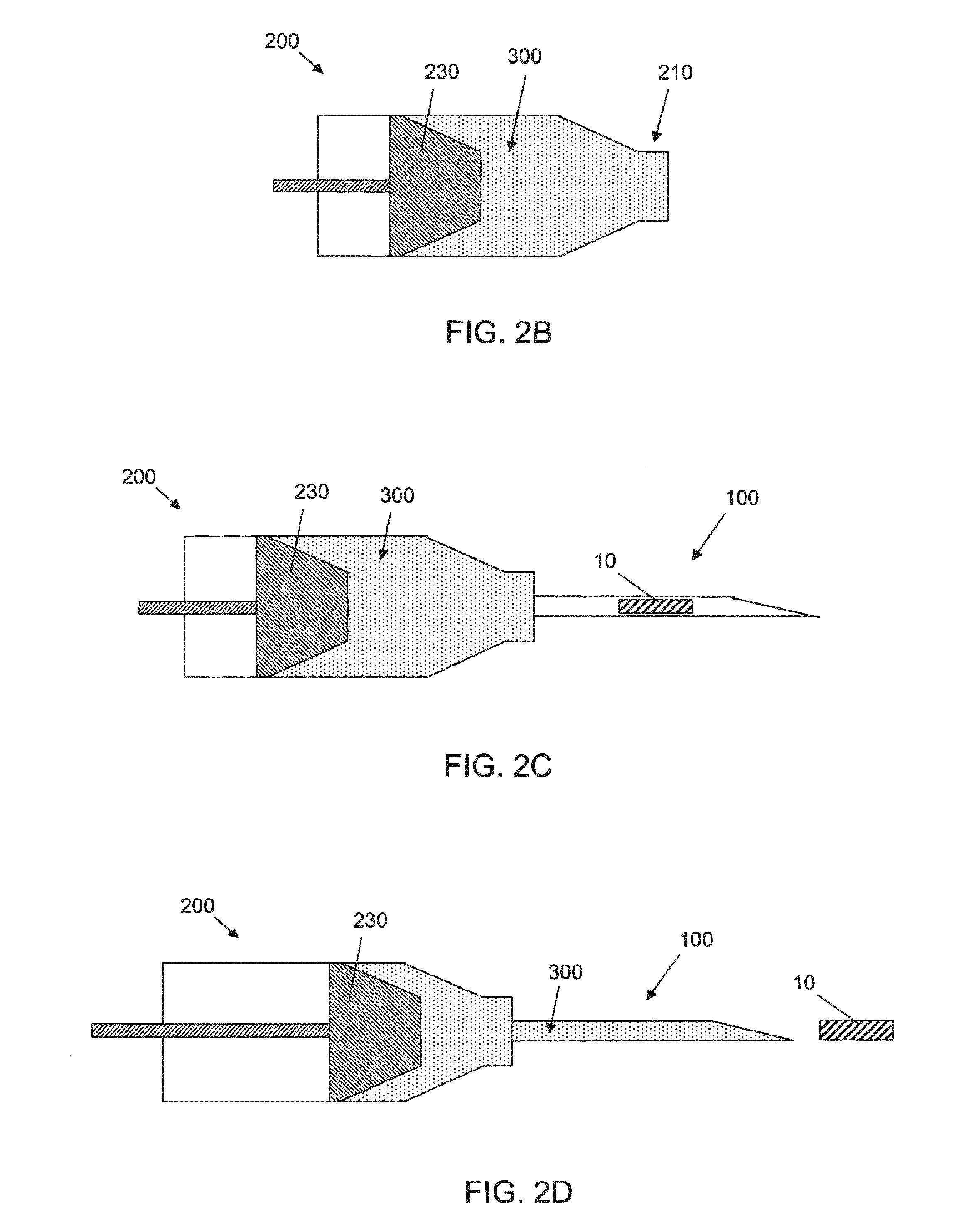Particle delivery
a particle and particle technology, applied in the field of particle delivery, can solve the problems of increasing the likelihood that the material will become contaminated or the cell properties will change, and the cells are not readily retained in the appropriate area,
- Summary
- Abstract
- Description
- Claims
- Application Information
AI Technical Summary
Benefits of technology
Problems solved by technology
Method used
Image
Examples
example 1
Acute In Vitro and In Vivo Assessment of a Solid Carrier for Cell or Drug Delivery to Intervertebral Discs
[0065]The success of cell or drug therapy to treat painful, degenerated intervertebral discs will depend, in part, on reliable delivery and retention of the therapeutic agents within the disc. The lack of vasculature in the disc favors that the agents be implanted directly into the disc space; e.g. via a needle or catheter. Damage from placing a needle into the disc and large internal pressures pose technical challenges to retention of therapeutic agents such as cells or drug-loaded microspheres. Combining cells or drug-loaded microspheres with biomaterials to serve as vehicles or scaffolds may enhance retention and efficiency.
[0066]In this study, solid material was evaluated acutely in vitro and in vivo for use as a delivery vehicle for stem cells or microspheres into intervertebral discs. Methods were established for delivering cells and microspheres into discs in combination ...
example 2
In Vivo Assessment of Mesenchymal Stem Cell Delivery and Retention in Intervertebral Discs
[0099]This study builds upon an acute study of cells and biomaterials delivered into porcine intervertebral discs discussed above in Example 1. The study presented in this Example compares the chronic delivery and retention of three approaches for cell delivery: (1) in a hydrogel, (2) in solution with a collagen sponge, (3) in solution without a biomaterial. Four week retention of adult, allogeneic mesenchymal stem cells delivered into porcine intervertebral discs was evaluated.
[0100]An overview of the results of this study show that injected MSCs were detected for each test article, with MSCs delivered with collagen sponge having the highest retention (49%, measured cells as a percentage of injected cells) followed by saline (17%), and hyaluronan gel (9%), respectively. Morphology of the injected MSCs indicates poor viability and no chondrogenesis. None of the test articles elicited an inflamm...
PUM
| Property | Measurement | Unit |
|---|---|---|
| water absorption | aaaaa | aaaaa |
| volume | aaaaa | aaaaa |
| volume | aaaaa | aaaaa |
Abstract
Description
Claims
Application Information
 Login to View More
Login to View More - R&D
- Intellectual Property
- Life Sciences
- Materials
- Tech Scout
- Unparalleled Data Quality
- Higher Quality Content
- 60% Fewer Hallucinations
Browse by: Latest US Patents, China's latest patents, Technical Efficacy Thesaurus, Application Domain, Technology Topic, Popular Technical Reports.
© 2025 PatSnap. All rights reserved.Legal|Privacy policy|Modern Slavery Act Transparency Statement|Sitemap|About US| Contact US: help@patsnap.com



